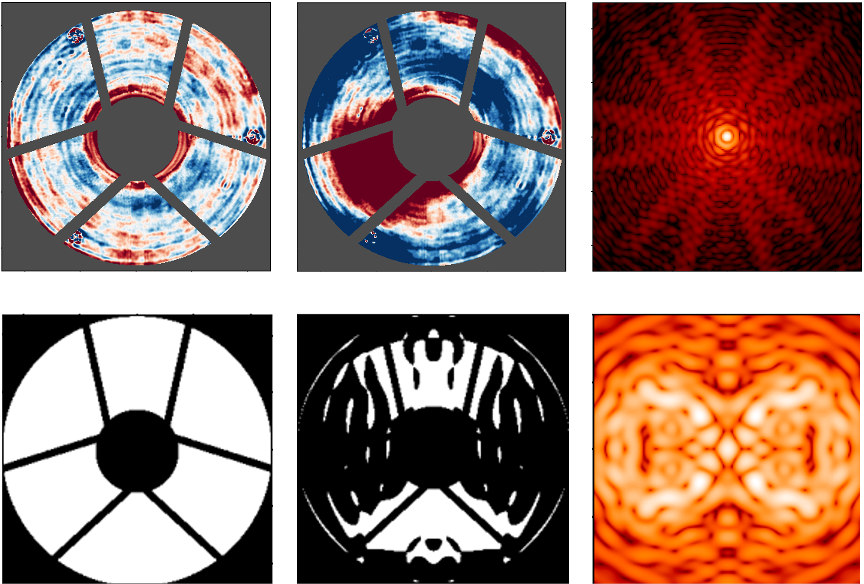WebbPSF for Roman
Welcome to the WebbPSF documentation written for the Roman Space Telescope!
WebbPSF: Simulated Point Spread Functions for JWST and the Nancy Grace Roman Space Telescope
Examples of WebbPSF for Roman WFI and the Coronagraph Imager.
This article contains:
WebbPSF for Roman
WebbPSF is a Python package that simulates point spread functions (PSFs) for both the James Webb Space Telescope and the Nancy Grace Roman Space Telescope. Using a set of pre-computed Optical Path Difference (OPD) maps, the tool simulates PSFs for various instrument configurations. For Roman, two modes are supported: the Wide Field Instrument (WFI), based on recent optical models from NASA's Goddard Space Flight Center, including field- and wavelength-dependent aberrations, and a preliminary version of the Coronagraph Instrument based on the Shaped-pupil Coronagraph early design.
The Introduction to WFI article for more information on the instrument.
WebbPSF Software Version
This documentation is written for WebbPSF version 1.2.1 (released on August 11, 2023).
Related Articles
In this series of articles, we provide users with a high-level view of the tool, its capabilities, limitations, as well as some use cases and tutorials.
Installation
WebbPSF is run locally and installation of the software is straightforward when using pip. Note that as of version 1.2.1, Python 3.9 or higher is required.
pip install webbpsf
The main dependency of WebbPSF is POPPY (Physical Optics Propagation in PYthon), a highly flexible package that simulates physical optical propagation including diffraction. Other major dependencies include:
- NumPy, a package for scientific computing with Python
- SciPy, a package containing algorithms for scientific computing with Python
- MatPlotLib, a library for Python visualizations
- AstroPy, the community built core package for Astronomy in Python
All the required dependencies are installed by default when the user installs WebbPSF . Although optional, SYNPHOT is highly recommended in order to enable the simulation of PSFs with realistic source spectra.
Note that WebbPSF also requires input data for its simulations, including optical path difference (OPD) maps, filter transmission curves, and coronagraph mask shapes. In addition, the environment variable webbpsf_path must also be set to point to the directory where the WebbPSF data is stored. These data files are not included in the source distribution and must be downloaded manually; detailed steps for installation, the associated data, and setting up the environment variable can also be found in the readthedocs documentation.
Users interested in running the development version of WebbPSF and/or contributing to its ongoing development may also clone or fork from the main GitHub repository.
Other Resources
Interested users will want to refer to the readthedocs documentation.
The source code and other relevant information can also be found on the GitHub repository.
For additional questions not answered in this article, please contact the Roman Help Desk at STScI.
References
In addition to this documentation, WebbPSF is described in the following references. Users are encouraged to cite one of these publications:
Perrin et al. 2014, “Updated point spread function simulations for JWST with WebbPSF”, Proc. SPIE. 9143
Perrin et al. 2012, “Simulating point spread functions for the James Webb Space Telescope with WebbPSF”, Proc SPIE 8842
Perrin 2011, "Improved PSF Simulations for JWST: Methods, Algorithms, and Validation", JWST Technical report JWST-STScI-002469
